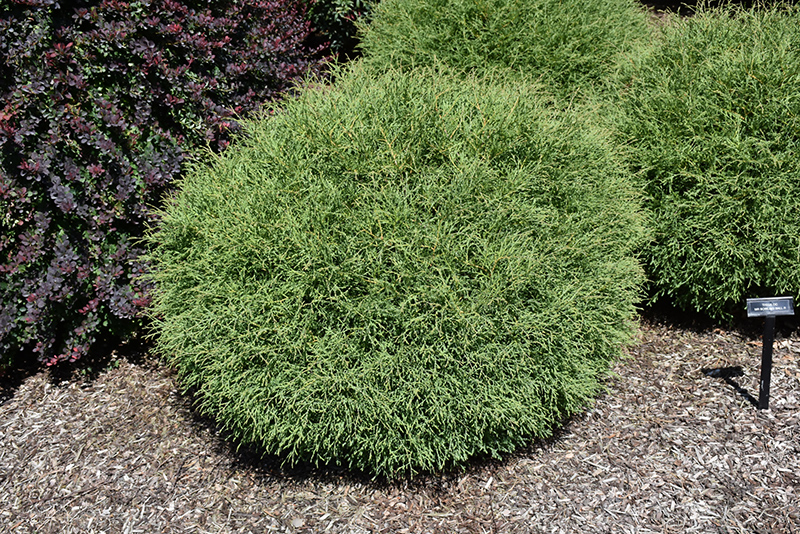Arborvitae, Mr. Bowling Ball Thuja occidentalis 'Bobazam' Height: 30 inches Spread: 30 inches
Sunlight:
Hardiness Zone: 4a Other Names: Eastern White Cedar Description: This tiny shrub just demands to be loved by all gardeners, with very unusual threadlike sage-green foliage and an extremely dwarf, compact form that requires no pruning to maintain its perfectly rounded shape; ideal for rock gardens and detail use Ornamental Features Arborvitae, Mr. Bowling Ball is a dwarf conifer which is primarily valued in the garden for its ornamental globe-shaped form. It has attractive grayish green evergreen foliage. The threadlike sprays of foliage are highly ornamental and remain grayish green throughout the winter. Landscape Attributes Arborvitae, Mr. Bowling Ball is a dense multi-stemmed evergreen shrub with a more or less rounded form. It lends an extremely fine and delicate texture to the landscape composition which should be used to full effect. This is a relatively low maintenance shrub. When pruning is necessary, it is recommended to only trim back the new growth of the current season, other than to remove any dieback. It has no significant negative characteristics. Arborvitae, Mr. Bowling Ball is recommended for the following landscape applications; Planting & Growing Arborvitae, Mr. Bowling Ball will grow to be about 30 inches tall at maturity, with a spread of 30 inches. It tends to fill out right to the ground and therefore doesn't necessarily require facer plants in front. It grows at a slow rate, and under ideal conditions can be expected to live for approximately 30 years. This shrub does best in full sun to partial shade. It prefers to grow in average to moist conditions, and shouldn't be allowed to dry out. This plant should be periodically fertilized throughout the active growing season with a specially-formulated acidic fertilizer. It is not particular as to soil type or pH. It is somewhat tolerant of urban pollution, and will benefit from being planted in a relatively sheltered location. This is a selection of a native North American species. Special Attributes Arborvitae don't do well if they aren't well watered regularly. Evergreens need to be watered during the winter. Our desert climate especially in late winter to early spring evergreens can suffer during next growing season. An easy way to remember check for dryness on the holidays Halloween, Thanksgiving, New Year's Day, Valentines Day & Easter.![]()
![]()
![]()
![]()
![]()
![]()
![]()
![]()
![]()
![]()
![]()
![]()

